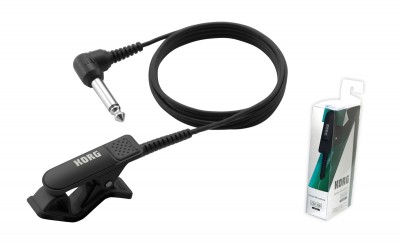In the ever-evolving landscape of music and sound design, artists and creators are constantly seeking new ways to push the boundaries of auditory experiences.
One innovation that has carved its niche in the realm of experimental music and sound design is the contact microphone.
In this article
- Unveiling the Contact Microphone
- Capturing the Unheard
- Creating a Sonic Palette
- Bridging the Gap Between Object and Sound
- From Field Recording to Sound Sculpting
- Pushing Boundaries and Redefining Creativity
- Conclusion
Sign Up for Free Today
Find the perfect voice for your job today, or sign up as a talent to start booking voice over work on Voices.
This unassuming device has the power to transform the mundane into the extraordinary, capturing the hidden symphonies of everyday objects and opening doors to a world of sonic exploration.
Unveiling the Contact Microphone
At first glance, a contact microphone might appear to be nothing more than a modest mic, but its impact on the sonic universe is profound.
Unlike traditional microphones that capture sound waves traveling through the air, contact microphones have the unique ability to pick up vibrations and resonances from objects they are in direct contact with.
This distinctive feature allows artists and sound designers to venture into uncharted auditory territories, discovering sounds that are often hidden to the untrained ear.
Capturing the Unheard
Imagine the soft hum of a refrigerator, the rhythmic pattern of rain on a windowsill, or the delicate rustle of leaves in the wind. These are the everyday sounds that often fade into the background of our lives.
However, when viewed through the lens of a contact microphone, they become vibrant sources of inspiration.
By attaching the contact microphone to an object, a whole new dimension of sound is unlocked, revealing intricate textures and harmonies that were previously hidden from our perception.
Creating a Sonic Palette
In the realm of experimental music and sound design, the contact microphone acts as a versatile brush in an artist’s sonic palette.
Musicians and sound designers can experiment with a wide range of objects to bring about unique sounds that defy convention.
From resonant pipes and creaking doors to bubbling water and crackling flames, the possibilities are limited only by the imagination of the creator.
This diversity of sound sources empowers artists to craft compositions that evoke emotions and sensations beyond the realm of traditional instruments.
Bridging the Gap Between Object and Sound
The beauty of contact microphones lies in their ability to bridge the gap between the physical and the auditory.
An artist can touch, strike, or manipulate an object and instantly hear its sonic response.
This tactile connection adds an element of intimacy to the creative process, allowing artists to form a deeper bond with the sounds they produce.
The act of exploring an object’s sonic potential through touch can lead to unexpected sonic journeys, often resulting in compositions that are both captivating and breathtaking.
From Field Recording to Sound Sculpting
One of the fascinating applications of contact microphones is their role in the world of field recording. Traditionally, field recordings have been captured using conventional microphones, focusing on ambient sounds and natural environments.
With contact microphones, however, the focus shifts from capturing the environment as a whole to capturing the essence of individual objects within that environment.
This shift allows sound artists to curate sonic narratives that transport listeners into the heart of a soundscape, inviting them to experience the world from a different perspective.
Pushing Boundaries and Redefining Creativity
Contact microphones have become known for pushing the boundaries of creativity in music and sound design.
They challenge artists to rethink the very definition of sound and embrace unconventional approaches to sonic expression.
By incorporating contact microphones into their toolkit, musicians and sound designers can break free from the constraints of tradition, sparking innovation and inviting listeners to embark on sonic journeys that defy expectations.
Conclusion
In the ever-expanding universe of music and sound, contact microphones stand as a testament to the infinite possibilities of sonic exploration.
Through their unique ability to capture the hidden melodies of everyday objects, they have opened doors to new realms of creativity for artists and sound designers.
From the gentle crinkle of a leaf to the resonant clang of a metal sheet, contact microphones reveal a world of sound waiting to be discovered.
As they continue to shape the landscape of experimental music and sound design, one thing is certain: the sonic frontiers they unlock are limited only by the imagination of those who wield them.

Leave a Reply